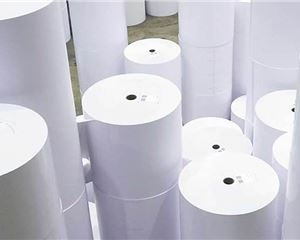Kiran Prayagi, print technologist and chairman, Graphic Art Technology & Education demystifies colour management in a series of articles. In this fourteenth article, he explains the basics of colour correction.
Articles 6, 7, 8 in this series described the greys and tones and article 13 on ink colour
deficiencies of dyes and pigments. This article will describe the advanced information on
those aspects. Repeating the diagrams for printing primary colours, ideal colours figure 1 and
available colours figure 2.

When two thirds of the visible spectrum is perceived the two basic colours combine to give
one secondary colour that correspond to cyan, magenta or yellow. When these colorants are
deposited on white or transparent substrates, the base substrate is calibrated to read as 100
percent reflection or transparent for all three basic colours, red-green-blue. If the colorants
cyan-magenta-yellow were ideal, as in figure 1, the reflected or transmitted lights would be
equal to reflected or transmitted lights by the base substrates. See table, figure 3.

Unfortunately, the colorants cyan-magenta-yellow are not ideal and have some defects, as
shown in figure 2, the reflected or transmitted lights, therefore, are not equal to reflected or
transmitted lights by the base substrates. See table, figure 4. The reflection and transmission
figures for the colorants are only indicative, the actual percentage may vary.

Now, comparing ideal figure 3 and available figure 4 following deficiencies are evident.
Cyan colorant is absorbs red and gives blue and green :
Blue given is 100 – 55, therefore, a deficiency of 45 %
Green given is 100 – 30, therefore, a deficiency of 70 %
Magenta colorant is absorbs green and gives blue and red :
Blue given is 100 – 45, therefore, a deficiency of 55 %
Red given is 100 – 80, therefore, a deficiency of 20 %
Yellow colorant is absorbs blue and gives green and red :
Green given is 100 – 85, therefore, a deficiency of 15 %
Red given is 100 – 95, therefore, a deficiency of 5 %
It is readily seen that none of the colorants is reflecting or transmitting any of the colours
equal to reflection or transmission by the substrates. This deficiency does not give clean
colours and are degraded or greyed to some extent called, ‘grey error’ of colorants. Yellow
having the least grey error and cyan the maximum. See figure 2. This is further exaggerated
by dirty substrates, such as newsprint and the effect is minimised on coated papers with high
optical brightness.
The first stage in colour correction is ‘grey balance’ and second stage is ‘tone reproduction’ as
explained in articles 6, 7, 8, and 13. Grey balance optimisation brings colorants in balance by
changing their proportion in combination of cyan-magenta-yellow instead of equal quantity
deposition. This is by changing colorant volumes in photography or gravure printing process
and dot variations in the other printing processes. After this colour correction is applied to
coloured areas.
From above it is clear cyan has blue deficiency of 45 % and magenta has blue deficiency of
55 %. Blue absorption is a function of yellow colorant. When it is also absorbed by cyan and
magenta it behaves as if these colorants have contamination of yellow colorants. Since
nothing can be done about it, to compensate the amount of yellow colorant is reduced
whenever these fall in combination. In cyan-yellow combination yellow is reduced by 45 %
and in magenta-yellow combination yellow is reduced by 55 %.
Likewise, cyan has green deficiency of 70 % and yellow has green deficiency of 15 %. Green
absorption is a function of magenta colorant. When it is also absorbed by cyan and yellow it
behaves as if these colorants have contamination of magenta colorants. Since nothing can be
done about it, to compensate the amount of magenta colorant is reduced whenever these fall
in combination. In magenta-cyan combination magenta is reduced by 70 % and in magentayellow combination magenta is reduced by 15 %.
Similarly, magenta has red deficiency of 20 % and yellow has red deficiency of 5 %. Red
absorption is a function of cyan colorant. When it is also absorbed by magenta and yellow it
behaves as if these colorants have contamination of cyan colorants. Since nothing can be done
about it, to compensate the amount of cyan colorant is reduced whenever these fall in
combination. In cyan-magenta combination cyan is reduced by 20 % and in cyan-yellow
combination cyan is reduced by 5 %.
In actual practice, it is far more complicated than described here.

In manual colour correction method this is done reducing dot sizes referring to the process
colour charts or based on experience. Today, unfortunately, the most Photoshop operators
work exactly the same way on uncalibrated colour monitors.
In photographic masking methods (now obsolete) this was achieved by exposing final colour
separation films through an intermediate photographic masks. See figures 6 and 7.

The principles of corrected separations in figure 7 has also been used in the electronic colour
scanners to modify the electronic signals.
Another colour correction system used in the colour scanners and now also present in today’s
colour management systems is based on Neugebauer Equations. The fundamental principle is
in any three colour reproduction there are only eight colour areas. Substrate colour, cyan,
magenta, yellow, red, green, blue, 3-colour and in four colour reproduction these eight
combined with black and only black, thus total 17 colours. There are no other colours in
microscopic halftone image structure. So effectively only 17 areas are controlled get right
colour reproduction. See figure 8.


















 See All
See All